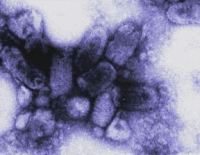6/21/09
New raccoon hideout
I had some left over plywood and built a little platform for the girls to hide out on. They are spending most of their time up there now.
Pumkin and Sandra are refusing the bottle for 3 days now and eat only solid foods. Rocky has started to nibble on kitten chow.



Posted by
MissDolittle
at
12:33
6
comments
![]()
Labels: New raccoon hideout
6/18/09
Know your Neighborhood Wildlife - The Real Facts about Rabies
Know your Neighborhood Wildlife - The Real Facts about Rabies
by TOM PIPERSON & BIRGIT SOMMER
June 17, 2009
Getting the facts about rabies is not easy. Myths and misconceptions are as strong today as they were 4,000 years ago when rabies was first recognized. When the average person today thinks about rabies, they typically imagine dogs gone wild, foaming at the mouth, and painful shots. Ignorance about rabies can be hazardous to your personal health and well being, as well as the safety of family members, beloved pets and livestock. Understanding the facts about rabies, as provided in this article, can help prevent the spread of the disease, or even save a life.
Fact – You cannot contract rabies from an animal held in quarantine for 10 days.
If an animal who seems ill or acts strange happens to bite you, it is possible you could be infected with the rabies virus. The virus is typically spread through the saliva of an infected carrier in the late stages of the disease after it has reached the brain. From thousands of years of medical observation of rabies victims, it is known that 3-5 days after reaching the brain, the animal will show unmistakable symptoms of rabies. A few extra days of quarantine are added as a precaution.
Fact – Until the rabies virus reaches the brain, a bite from an infected animal does not transmit the disease to its victim.
The period between the time a victim is bitten by a rabid animal and the time it can spread the infection to others is called the incubation period. It can take a few weeks up to several months for the virus to transfer from muscle tissue, to a peripheral nerve, the central nervous system, the brain, and from there into the saliva. This incubation time can depend on age (shorter in children), the location of the bite (the farther away from the head, the better), and the severity of the bite.
Fact – A person cannot contract rabies from the blood, feces or urine of an infected animal, or from handling a carcass that is dried or mummified.
Only saliva or nerve tissue (brain, spinal cord) from a rabid animal can transmit the virus to another victim.
It is possible to contract rabies through an open wound or mucous membrane. One possible scenario would be by contact with a water dish contaminated with saliva from a rabid dog. Or by breathing the air in a cave where rabies-infected bats are present. Human transplants who died of rabies infection have proven that nerve tissue transmits the virus, as well.
Fact – Bats can bite a victim without leaving a visible trace and present a unique danger for rabies infection.
Bats also carry the rabies virus. People who are awake will feel a pinch when bitten by a bat. But, when asleep, the bat’s needle-like teeth make practically no wound and may not even be felt. Because a few cases have proven rabies as the cause of death in individuals found asleep in a room with a bat, state governments have taken special steps to educate their residents.
In Iowa, for example, the public health department presents a detailed decision tree for the public to use in diagnosing suspected cases of bat-infected rabies, and recommends administering the rabies post-exposure prophylaxis (PEP) in cases where a person who has fallen asleep in the same room as a bat cannot say with certainty “I know I wasn’t bitten.”
In Colorado, based on the epidemiology of rabies, the primary rabies exposure risk for domestic pets is from bats. The Colorado Public Health Department recommends prompt treatment of pets for any direct exposure to bats, such as if direct physical contact was observed, the presence of puncture wounds on the bat or pet, or the presence of saliva or injuries on the bat.
Fact – Rabies is rare in opossums, rodents, and squirrels.
Small rodents (mice, rats, guinea pigs, hamsters, chipmunks, squirrels) are almost never found to be infected with rabies and have not been known to cause rabies among humans in the United States. According to the Centers for Disease Control and Prevention, bites by these animals are usually not considered a risk of rabies unless the animal was sick or behaving abnormally and rabies is a major problem in your vicinity.
Opossums have naturally evolved their metabolism to resist many common infections, as well as having a robust immune system virtually impervious to the venom of rattlesnakes, vipers such as cottonmouth snakes, and spiders. Their extremely low body temperature of 94 to 97 degrees F is an inhospitable environment for survival of the rabies virus and other common wildlife diseases. There have been only 5 confirmed cases of a rabies infected opossum in Texas since 1962.
Fact – Human-to-human transmission of rabies is possible, but very rare.
There have been 8 confirmed cases of death due to human-to-human rabies transmission as the result of a corneal transplant operation.
Fact – The signs of rabies in an infected animal are not easily recognized.
Foaming at the mouth can be a symptom of many conditions more common than rabies, such as roundworms, ticks, poisoning, liver failure, allergies, distemper, and dehydration. It is important to remember it is the total package of symptoms that add up to a possible diagnosis of rabies. Be alert for changes in behavior.
A dog that is normally friendly may avoid people. Dogs that are not normally sociable may act friendly to strangers. Animals may become aggressive, make strange noises or erratic movements, and attack other animals or humans. They may have trouble drinking, swallowing, or chewing. A direct fluorescent antibody test (dFA) is used to test the brain tissue of animals suspected to be rabid. However, the dFA test can only be performed after the animal has died.
Fact – Thoroughly cleaning and treating the bite or wound area significantly reduces the chance of infection.
Immediate treatment is required in order to prevent possible rabies infection. First, flush the area with water for at least one full minute. Follow up by washing with soap (or detergent if soap is not immediately available) to remove saliva containing the virus. Then apply a disinfectant such as alcohol, bleach, iodine tincture directly on the wound and under skin flaps to stop the rabies from being absorbed into the body tissue. Get to your doctor or an emergency room as soon as possible.
Fact – The symptoms of rabies in humans are numerous and increases in severity as the disease progresses.
Some of the symptoms identified in rabies victims include twitching or tingling around the area of the animal bite, fever, sore throat, difficulty in speaking, confusion, aggressiveness, nausea, abdominal pain, muscle aches and spasms, paralysis, seizures, hydrophobia (fear of drinking or swallowing water, painful spasms when trying to drink), diplopia (double vision), breathing difficulties.
Fact – Treatment for rabies in humans who have been bitten by a rabid animal is 100% effective if given within 24 to 48 hours after the bite occurred.
Post-exposure rabies anti-serum costs about $1,200. Patients in the US receive one dose of human rabies immunoglobulin, or HRIG, and five doses of rabies vaccine administered over a 28 day period, at day 0, day 3, day 7, day 14 and day 28. One half the dose of the HRIG is injected in the region of the bite, if possible, with the remainder injected into muscle tissue away from the bite. Previously, the immunoglobulin was injected through the abdominal wall with a large needle which was extremely painful.
Fact – Vaccination of animals and humans can greatly reduce the spread of rabies.
Vaccination of wild animal reservoirs through food baited with rabies vaccine has controlled the spread the disease in Europe. At one point the virus was almost completely eradicated in the regions treated before rabies started to reappear from wild and imported animals. Wild animals such as the red fox account for 4 times the number of rabies cases as domestic animals in France.
Domestic animal vaccination programs are the law in many municipalities across America. Typically, a dog or cat that is not current with rabies vaccinations and has a wound of unknown origin must be quarantined at a veterinary hospital at the owner’s expense or at home under the supervision of the department of agriculture or public health. Some pet owners cannot afford the cost of quarantining and are required, by law, to euthanize their pet. States such as Pennsylvania have set up vaccination clinics costing $10 to encourage residents to obey the law requiring all domestic dogs and cats three months of age or older to be inoculated against rabies.
Fact – New treatments and vaccines hold promise for eventually and permanently ending rabies everywhere.
In over 4000 years, when the rabies virus was first recognized, slow but steady progress was made in the fight against rabies. It wasn’t until the late 19th Century when the original rabies vaccine, harvested from infected rabbits, was formulated by Louis Pasteur and Emile Roux, back in 1885. The modern vaccine, formulated in the late 1960s, uses purified and cultured cells grown and harvested in sterile labs. Biological research and advances in technology continue to bring the world closer to eliminating rabies completely and forever.
Today, the vast majority of human deaths caused by rabies occur in Asia and India. The industrialized world, including countries such as New Zealand and Australia, much of Western Europe, and the United States, have much lower rates of death from rabies.
Human vaccination is essential for animal care professionals, lab technicians and anyone who may come in contact with the rabies virus in the course of their work or hobby. The vaccination consists of a series of shots given in the arm or shoulder and must be renewed on a regular basis. Since the potential for exposure is high among certain individuals, vaccines are effective in preventing rabies infections. Overseas travel to locations known for high incidence of infection is another circumstance where administration of the human rabies vaccination series is highly recommended.
Summary
Provide your pets and livestock with rabies vaccine as advised by your family veterinarian. Keep rabies pet vaccines current.
Keep pets away from wildlife and don’t let them wander loose through the neighborhood.
Contact the proper authorities if you see an animal acting strangely. Never attempt to catch or touch the animal unless you are trained.
If your pet is bitten by an animal, call the animal authorities and take your pet to the vet.
If a person is bitten by an animal (whether it is from a wild skunk caught foraging in the trash or a nip on the hand from a neighbor’s pet), clean the wound thoroughly and go to your doctor or medical clinic for treatment. Contact the authorities who will try to capture the animal for testing or quarantine.
Keep contact information handy for notifying the proper authorities about a possible rabid animal in the neighborhood.
Information and research provided by Birgit Sommer, licensed wildlife rehabilitator in the State of Texas and Director of the Rainbow Wildlife Rescue.
Posted by
MissDolittle
at
18:27
4
comments
![]()
Labels: Know your Neighborhood Wildlife - The Real Facts about Rabies
6/16/09
Rocky, Sandra, Pumkin, orphaned raccoons are at it again
Everybody is doing great here despite of the heat!
Rocky climbed my leg for the first time, and I had the camera on me! Sandra starts to eat solid foods and is quite feisty and Pumkin is her usual sweet and cuddly self.
Here is Rocky, the princess of the tree lol:
And Sandra climbing my leg for more sips from the bottle even though she prefers Fruit Loops these days. But too much sugar isn't good either:
Last but not least, Coco's pups had their first solid food today.
I re-named the Coca, the kitten, into Puppy by the way! Just for the confusion effect :-):
Posted by
MissDolittle
at
11:49
2
comments
![]()
Labels: orphaned raccoons, raccoon rescue
6/11/09
Sandra, Rocky and Pumkin, Raccoons after the Storm
We had quite some storms last night, so I brought all animals, including the 3 girls of course, inside. After the storm had passed and the air is fresh and the ground still wet, I took the girls back outside. Boy did they enjoy the cooler temperatures!
And the starlings won't leave the nest!
Rocky and Abi:
Abi
Rocky and Abi asleep:
Rocky likes her ball:
Posted by
MissDolittle
at
09:35
2
comments
![]()
Labels: Raccoons after the Storm, Rocky and Pumkin, Sandra
6/10/09
Coco Banana adopts a Kitten
A couple of days ago I received a little kitten with the eyes just opening. It was weak and not in the best shape. Coco Banana's puppies had also just opened their eyes, so I felt I had nothing to lose by offering the kitten to Coco, see what she's going to. Accept or reject it. She accepted without hesitation!
Posted by
MissDolittle
at
13:56
1 comments
![]()
Labels: Coco Banana adops Kitten
6/8/09
New Raccoon Enclosure
We got around this weekend and worked all day yesterday, sweating gallons (really! lol) to get the floor of this enclosure done. We put wire mesh underneath the dirt, so the raccoons can't dig out and nothing can dig in.
We then furnished the enclosure and this morning, I brought the 3 girls, Pumkin, Rocky and Sandy in.
This is the enclosure:

Here are the girls:

The 3 Stooges aka 3 Starlings won't leave, insist of harrassing my neighors and myself for food:
and Coco's puppies opened their eyes today:
And last but not least, the 3 Abelenians are opened their eyes as well. Pictures will follow soon!
Posted by
MissDolittle
at
15:04
4
comments
![]()
Labels: New Raccoon Enclosure
6/6/09
3 Raccoon Girls Outside
Pumkin, Sandy and Rocky are outside together for the first time. I keep a very close eye on them and right now they are sleeping all in different spots: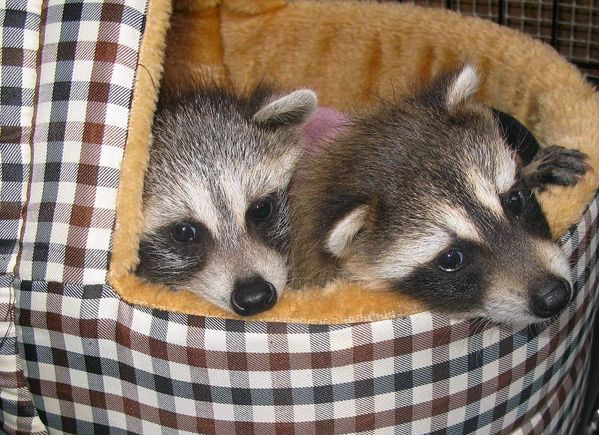
Posted by
MissDolittle
at
11:34
0
comments
![]()
6/5/09
Rocky, Sandy, Pumkin, Abi, Lena, Ian, the orphaned raccoons
So, with 6 raccoons from 4 different litters and different ages, cottontails, various birds, and a foster dog with 6 puppies, the Rainbow Wildlife Rescue is officially full.
But of course I want to share the fun with ya'll, so here goes!
Here are the movies!!!
Pumkin being a goofball:
Sandy and Rocky, first time together:
And Rocky and Pumpkin getting to know each other too:
Rocky (bottom) and Sandy (top), first touch: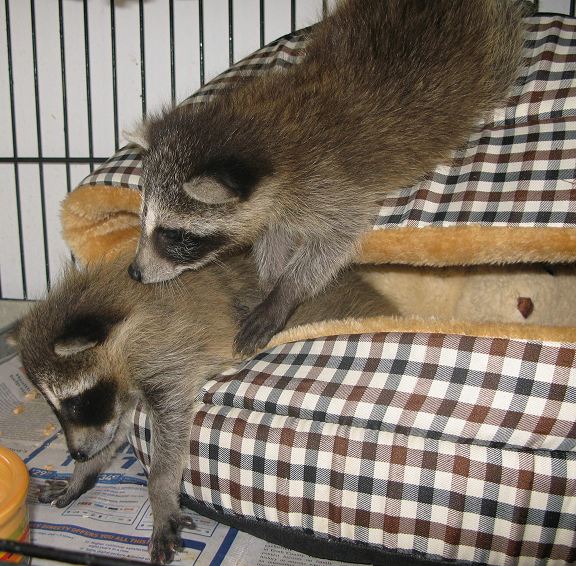
Precious little Rocky Girl: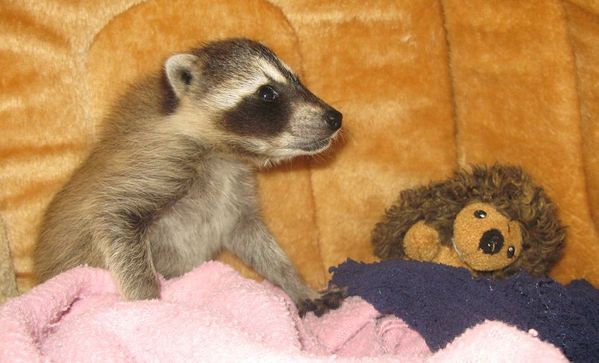
Posted by
MissDolittle
at
16:19
2
comments
![]()
6/2/09
Doves, Starlings, Raccoon Orphans
Abi and Lena, the coonie sisters all snuggled up sleeping together: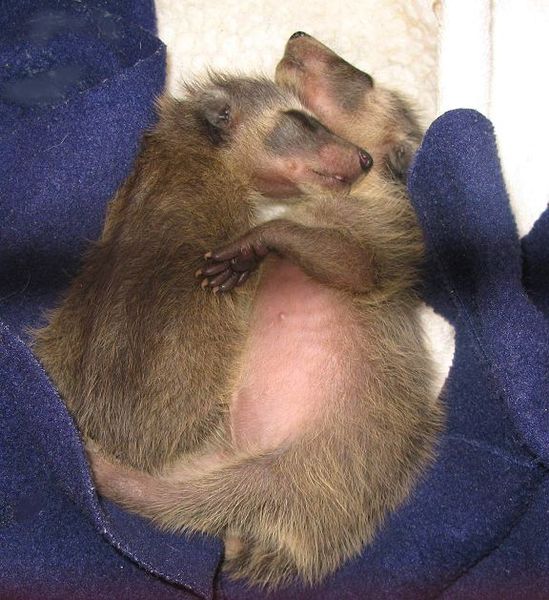
Their brother Ian was hiding under a stuffed teddy and didn't want his picture taken.
In addition we have some birds: doves and starlings:
and a little Killdeer:

Posted by
MissDolittle
at
13:14
1 comments
![]()
Labels: Doves, Raccoon Orphans, Starlings
5/31/09
Raccoons and Birds Update
I got to meet the most wonderful lady who took lil Peanut home with her to give her a permanent home. Poor lil Peanut does not only have neurological problems, but she also appears to be blind. But now she is in the best hands possible and I can stop worrying and start concentrating on the babies I still have.
The 3 Abilenaians, Abi, Lena and Ian are growing like crazy: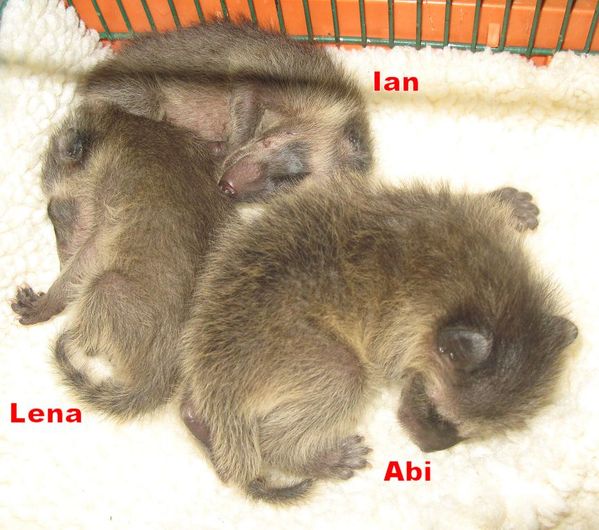
Here's a picture of Ian gaping. That happens sometimes when they fall to sleep with the bottle. The white stuff around his mouth is milk: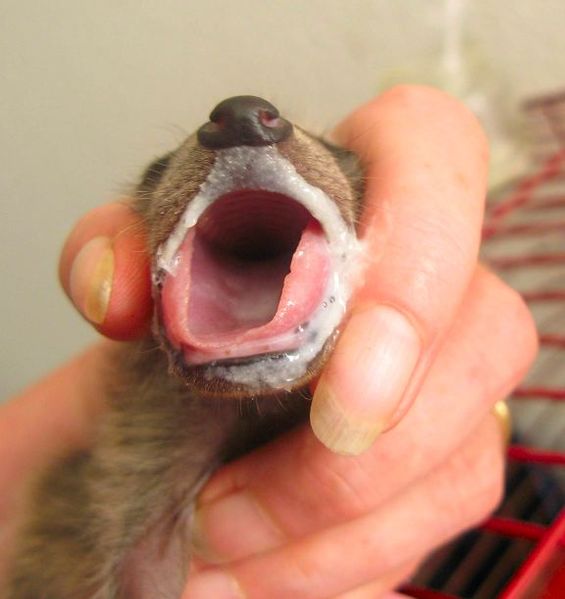
And below is Pumkin with sand on her nose while playing under my chair: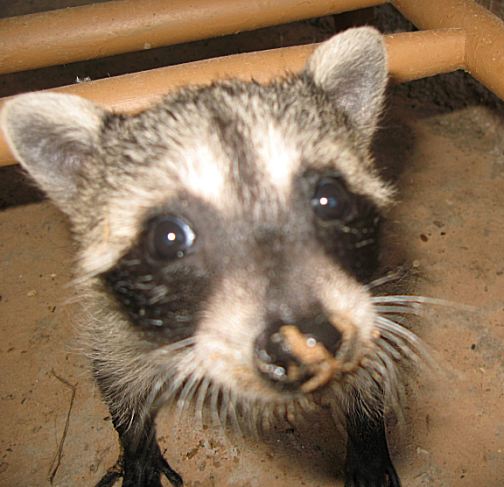
3 Starlings joined the family: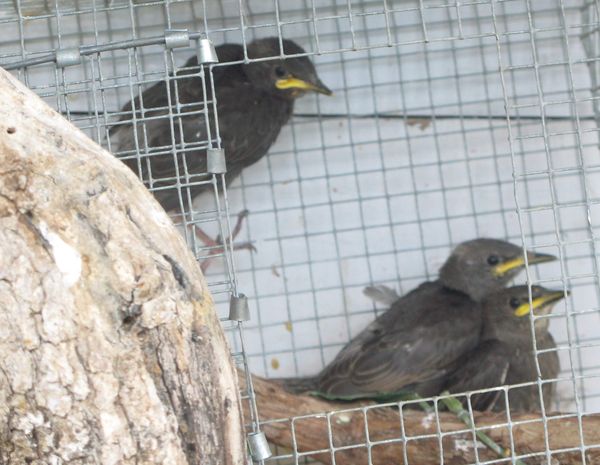
The doves are doing great and the sparrow is still here: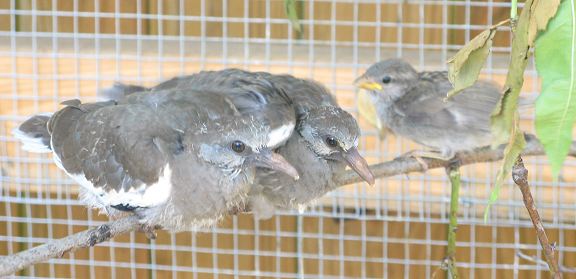
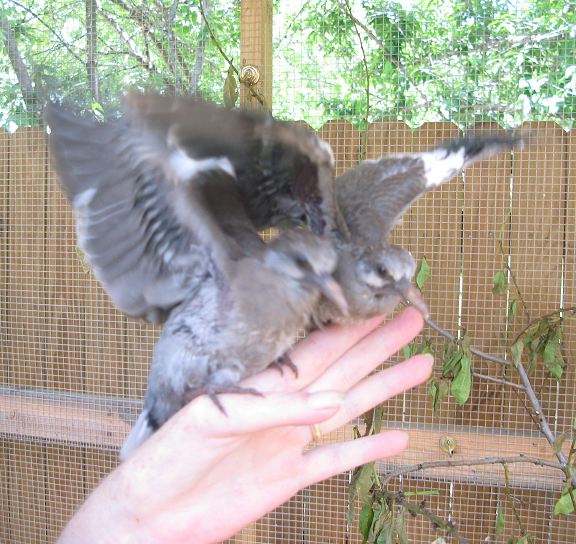
Posted by
MissDolittle
at
09:03
1 comments
![]()
Labels: Raccoons and Birds Update
5/30/09
Chihuahua Mom Coco Banana and her 6 Munchkins
What a happy family with those happy puppy noises!
Posted by
MissDolittle
at
16:45
0
comments
![]()
5/28/09
Raccoons Raccoons Raccoons
I finally have a few minutes to update this blog.
Pumkin has moved to the outside enclosure and has started to play. Unfortunately she is still alone, so I spend a fair amount of time playing with her:
Sad news about Peanut (who's a girl after all!). She has neurological problems and has no control over certain movements of her body, such as her head. Thankfully, Jani at the Breezy's Place in South Texas has offered to come and pick her up. She will get the best treatment possible which I cannot afford at this time. If she is not releasable, she will have a permanent home there too. Thank you, Jani and Katt!!
Then I have 3 new additions of about 10 days old, 2 girls and a boy. I named Abi, Lena, and Ian, based on the town they originated from, Abilene that is. All 3 are doing good, even though they are on antibiotics due to previous aspiration: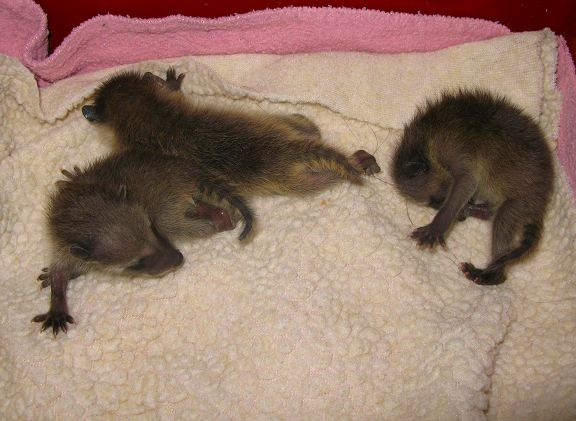
Coco says Hi too: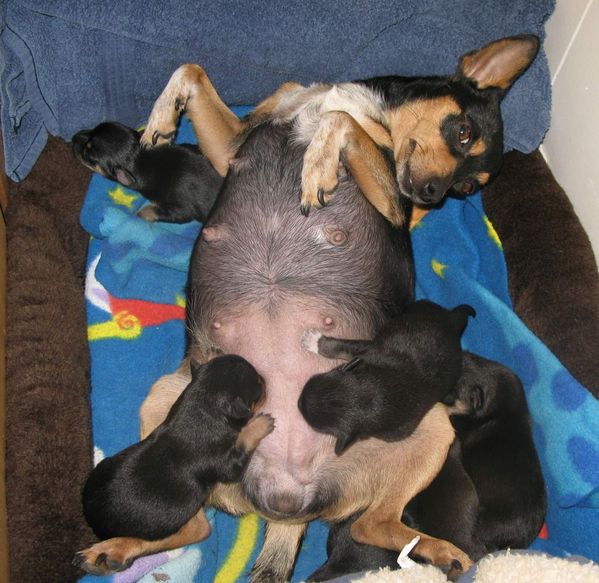
Posted by
MissDolittle
at
18:49
1 comments
![]()
Labels: Raccoons
5/24/09
Coco has 6 healthy Puppies
Coco Banana finally had her pups! Six of them! They all look healthy and they all look like mom.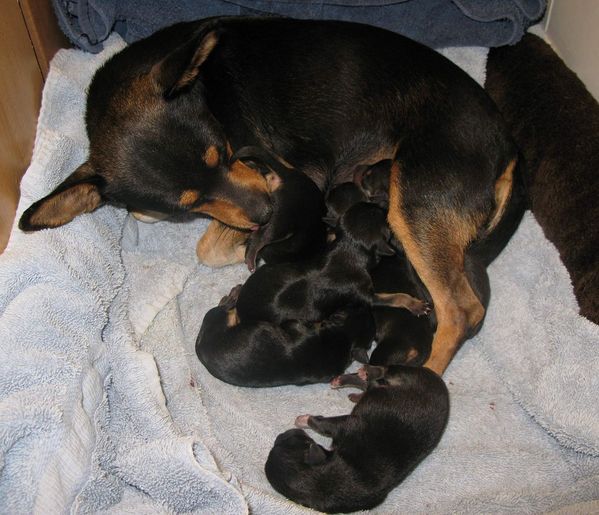
Posted by
MissDolittle
at
06:48
2
comments
![]()
Labels: Coco has 6 healthy Puppies
5/22/09
Raccoons, birds and a rehabber
Today Pumkin was introduced to a larger pool. I had gone to the Dollar Store and bought tons of colorful toys I to play with.
The first thing Pumkin did when I placed her into the pool was to tinkle into the water LOL. After that...well, see for yourself!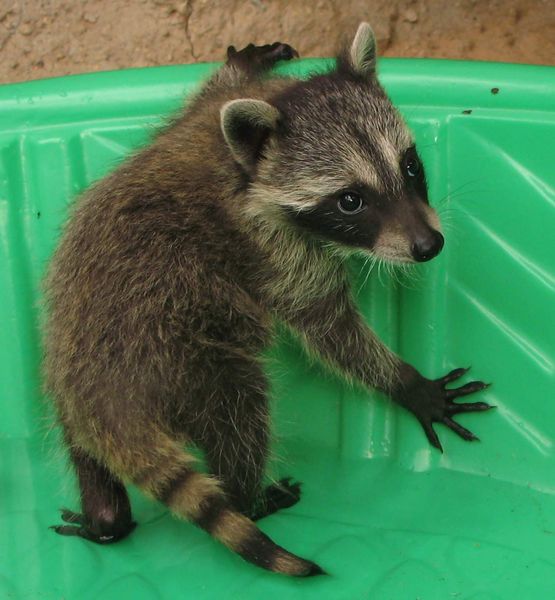
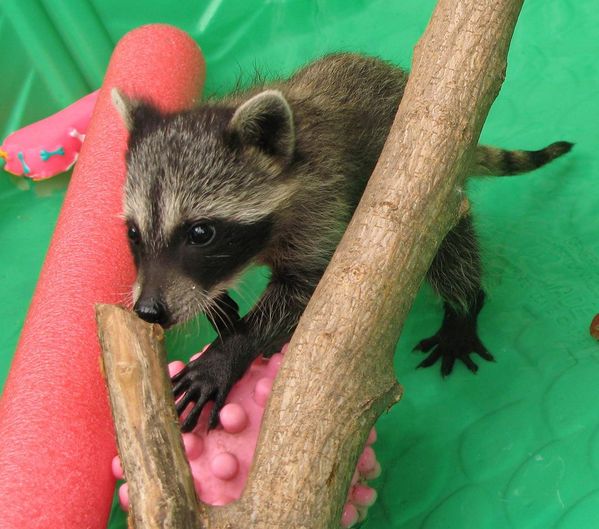
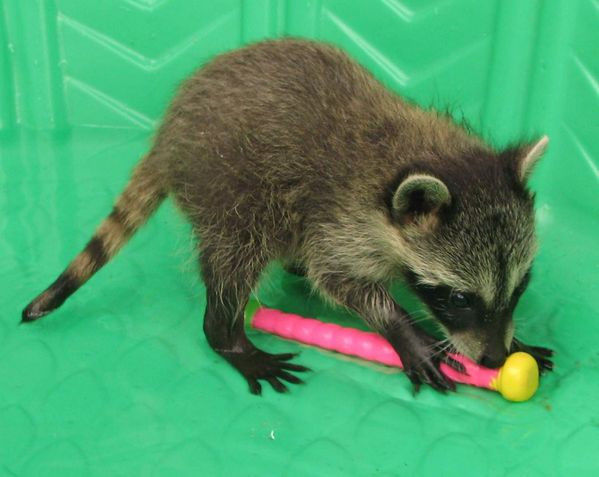
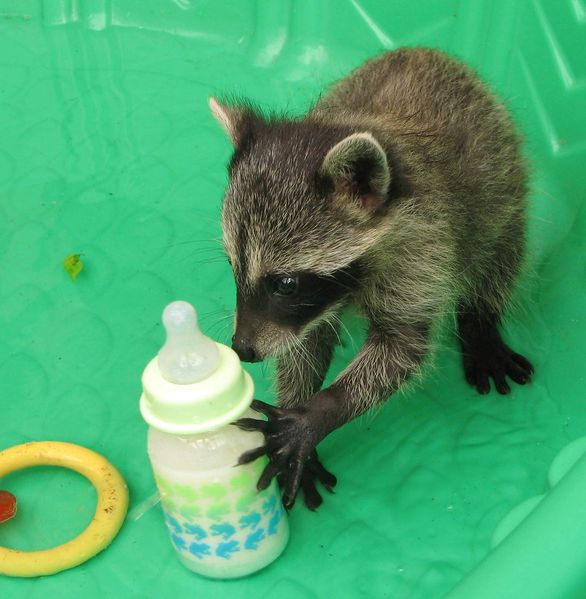
Afterward we had a good meal: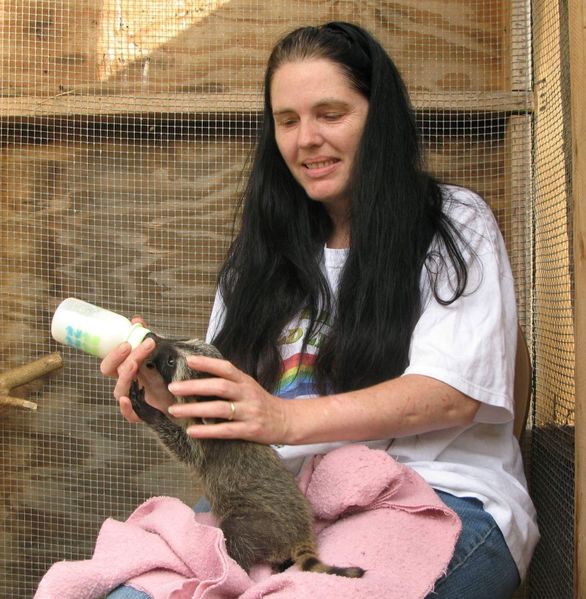
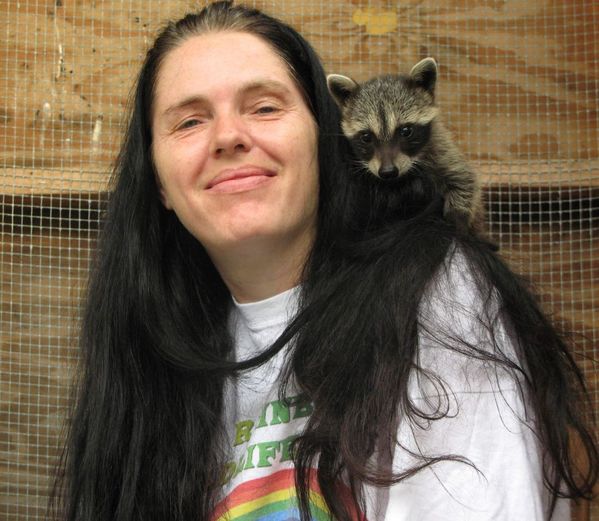
The birds also benefited from the trip to the Dollar Store. They got new baskets. Below you see 2 mourning doves and 3 phoebes: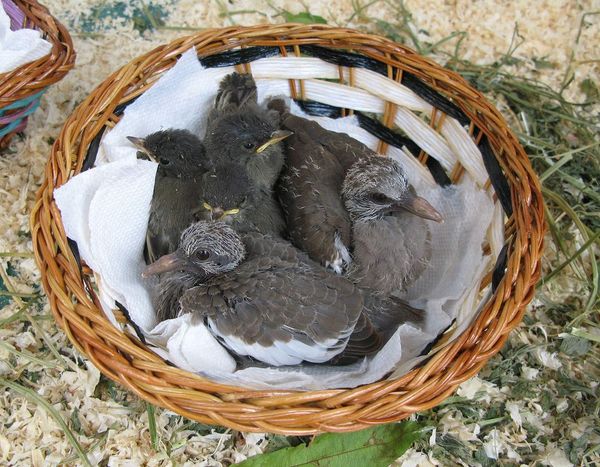
An injured great-horned owl that spent a night here before she was picked by the avian rehabber: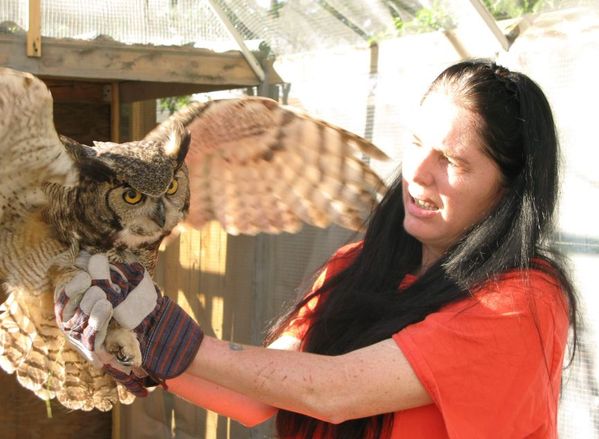
Posted by
MissDolittle
at
19:16
2
comments
![]()
Labels: birds, Pumkin, Raccoons, rehabber, wildlife rehabilitator
5/20/09
Peanut and Pumkin, orphaned raccoon babies
Here they are, my pride and joy of this year's spring season:
Peanut:
Pumkin: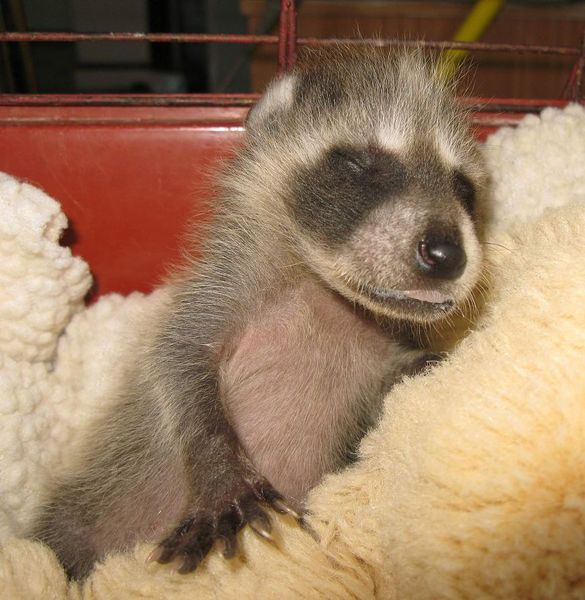
lil Peanut after his bottle.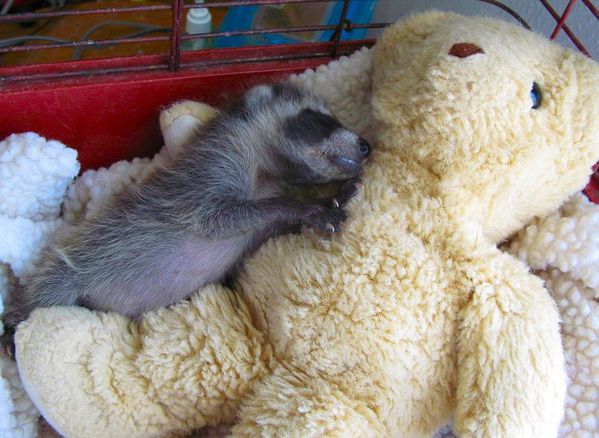
And lil Pumkin on her first day outside in the enclosure: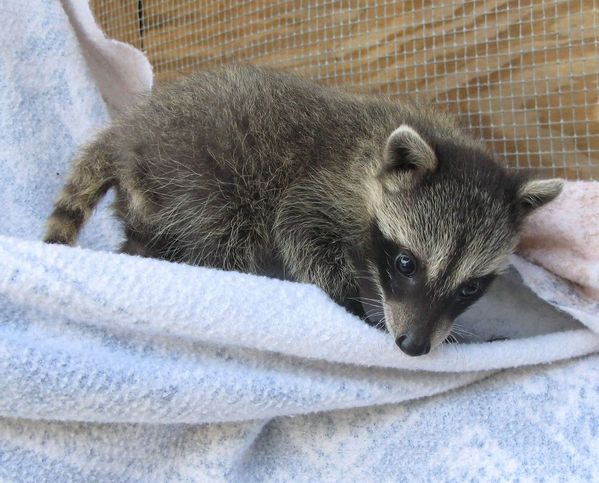
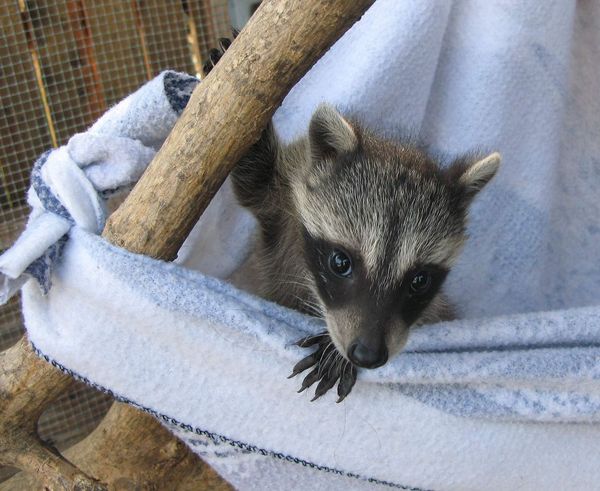
Posted by
MissDolittle
at
14:32
1 comments
![]()
Labels: orphaned raccoon babies, Peanut and Pumkin
5/18/09
Rainbow Wildlife Rescue in the News
2009
Know your Neighborhood Wildlife - The Opossum
Published: Monday, March 30, 2009 - Empire Tribune
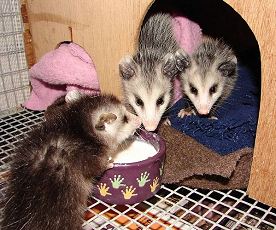 | Among the mix of Erath County wildlife is an unassuming creature that once roamed with the dinosaurs 70 million years ago. |
| Read the entire article HERE >>>> |
Know your Neighborhood Wildlife - The Squirrel
Published: Monday, February 17, 2009 - Empire Tribune
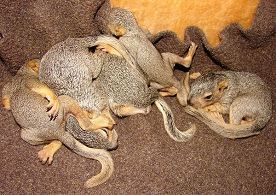 | Some folks in Erath County may call her a nut, but when it comes to squirrel rescue, Birgit Sommer knows her stuff. As a licensed rehabilitator and founder of Rainbow Wildlife Rescue in Stephenville, Sommer has worked with dozens of squirrels endangered by natural disaster... |
| Read the entire article HERE >>>> |
Know your Neighborhood Wildlife - The Cottontail Rabbit
Published: Monday, March 2, 2009 - Empire Tribune
 | Most folks living in Erath County have encountered rabbits. Coexisting with these furry, fertile creatures is not difficult once you understand them. |
| Read the entire article HERE >>>> |
Leave the Mothering to Nature
Experts say young animals who appear to be abandoned often are in parents' care
By Angelia Joiner
Special to the Reporter-News
Tuesday, February 17, 2009
 | Spring is just around the corner, and as the new season arrives so do the offspring of a variety of wildlife. Kindhearted humans sometimes find -- and try to take in -- young birds, squirrels, fawns or rabbits that appear to be abandoned. Roy Johnson, Taylor County game warden, said most of the time this is not the case. |
| Read the entire article HERE >>>> |
Honey and Trinity Success Story
How two dogs can create a lot of human winners
Published: Sunday, April 5, 2009 - Empire Tribune
 | Not everybody in Erath County knows about the Humane Society Animal Shelter and its adoptable pets. A few of the people that do know about it have the wrong impression. They often think of it as dog pound-hell. Maybe after reading the following story of the combined efforts of many people to make happy endings happen, they will change their minds and convince more pet lovers to adopt a pet instead of purchasing one from a pet store or a breeder. |
| Read the entire article HERE >>>> |
2008
Orphaned squirrels find refuge in Stephenville
Published: Tuesday, September 23, 2008 10:07 AM CDT
 | When natural disasters strike, a mobilization of relief workers from various agencies such as the Red Cross, National Guard, and FEMA are ready to respond, bringing in food and water, working to restore power, and setting up temporary shelter to assist in returning the disaster zone and the lives of those within it back to normal. |
| Read the entire article HERE >>>> |
Locals build ‘homes’ for orphaned squirrels
Published: Tuesday, September 30, 2008 9:06 AM CDT
 | The gray baby squirrels orphaned by Hurricane Ike now have a cozier place to play - and sleep - while temporarily residing in Erath County. Volunteers spent the better part of Saturday building a mesh enclosure at the Rainbow Wildlife Rescue Center in Stephenville so the little ones will have room to move around until they can be taken back to the coast. |
| Read the entire article HERE >>>> |
Rescuing Animals
Published: Sunday, May 2, 2008
| One local woman works to save abandoned and mistreated pets Birgit Sommer has been a Stephenville resident since 1991. She was born in Germany and just last month, after passing a test correct answering questions covering U.S. government and history, she took an oath before officials and became a naturalized citizen of the United States. "It just feels great to become a citizen of this country," Bridget said. "I studied hard in order to pass the test and now I can vote in this important election." | |
| Birgit didn't wait to become a registered voter before taking the responsibility of foster care of homes and abandoned animals in Erath County. Having a great love for animals, she was attracted to the animal shelter maintained by the Erath County Humane Society, shortly after becoming a resident in Stephenville. During the past few years she has given loving, expert care to hundreds of dogs and cats including entire litters of puppies and kittens. | |
| |
| Read the entire article HERE >>> | |
Stephenville woman takes in 'squirrely' hurricane victims
Published: Monday, September 22, 2008
STEPHENVILLE -- Appropriately nicknamed "Miss Doolittle" when she was just 5 years old, Birgit Sommer is taking in orphans from Hurricane Ike. Not the human kind. The small, furry kind. Infant gray squirrels were found everywhere after Ike moved through the Houston area, blowing down their nests, and residents were desperate to help them. | |
Sommer, a licensed wildlife rehabilitator, said before Ike had even moved out of the Gulf area, her phone began ringing off the wall and the e-mails started piling up. People were contacting her to see if she could help. | |
| Read the entire article HERE >>> | |
Donations helping baby squirrels left orphaned by Hurricane Ike
Published: Sunday, September 28, 2008
STEPHENVILLE -- Several volunteers were busy Saturday building a mesh wire enclosure at the Rainbow Wildlife Rescue center in Stephenville to provide shelter for additional gray squirrels orphaned by Hurricane Ike. Birgit Sommer, a licensed wildlife rehabilitator, said members of the Tarleton State University Student Wildlife Society collected $62 in donations and are soliciting area businesses for materials needed to build shelters for the squirrels. | |
She said she has also received a check for $500 from a Buffalo Gap resident, lumber from Barns and McCullough in Stephenville and numerous smaller donations. | |
| Read the entire article HERE >>> | |
Posted by
MissDolittle
at
14:49
0
comments
![]()

